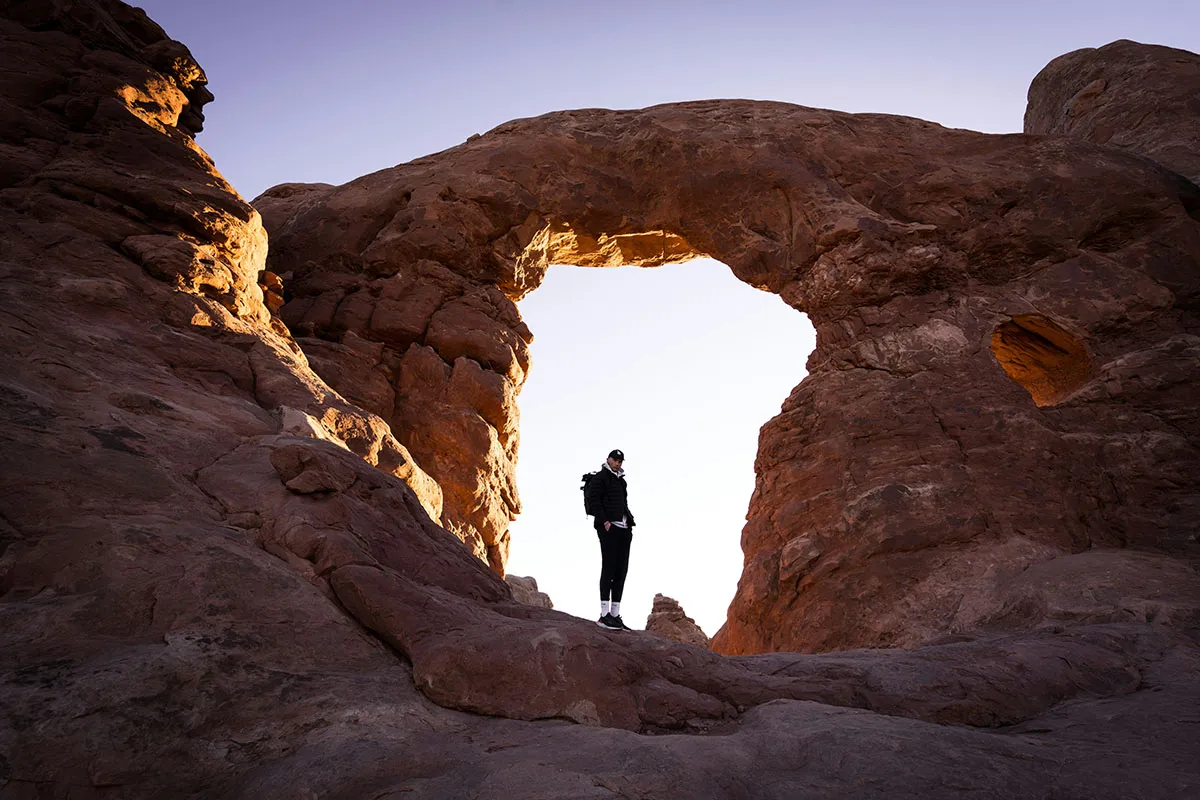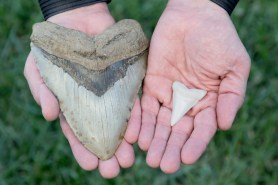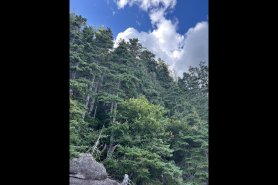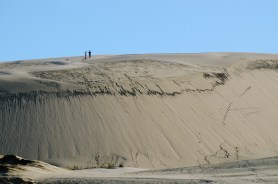

Growing up in Arizona, hiking in the desert was just “hiking.” Like most other desert natives, I instinctively knew things like when to go (and, more importantly, when not to go), and “forgetting to drink water” was simply not a thing. I knew to watch for snakes and cacti, and I knew the signs of heat illnesses like most people know the signs of a common cold or flu.
Videos by Outdoors
I no longer live in Arizona, but my family and I still desert camp and desert hike from our base in Southern California. For some of us, the desert is just “outside.” But for most people, the desert is the wild, wild west.
If you’d like to explore the unique beauty of the American Southwest—especially if you plan to brave some of that infamous desert heat—here are some things to keep in mind, plus some top desert hiking tips to help you stay safe and have fun.
Common Dangers When Desert Hiking
Whether you’re exploring Death Valley National Park in eastern California, Zion National Park in southern Utah, or Arizona’s Sonoran Desert, hiking in the desert can present different challenges than hiking in other environments.
Here are some key dangers of desert hiking.
Extreme Temperatures

Most deserts are known for their intense heat (although deserts are defined by average annual rainfall, not temperatures, making Antarctica the largest desert on Earth). In addition to dangerously high temperatures, deserts may also have very low temperatures. Sometimes, the temperature range in a single day is quite extreme, and hikers must be prepared for this.
Dehydration
It’s common to become mildly dehydrated while hiking in the desert, thanks to the dry air and high temperatures (generally speaking). However, this doesn’t mean you need to accept any level of dehydration as part of the desert hiking experience.
Common signs and symptoms of dehydration include headache, dark-colored urine, dry mouth, dry lips, feeling thirsty, lightheaded, and/or feeling tired. Unfortunately, if you begin to experience symptoms, it’s already too late. Begin rehydrating immediately to keep your dehydration from becoming life-threatening.
To avoid becoming dehydrated in the first place, hydrate regularly by taking frequent drinks of water or an electrolyte-replenishing fluid. The opposite of dehydration, hyponatremia, occurs when your body’s salt concentration becomes dangerously low.
Sipping water instead of chugging it will help prevent hyponatremia.
Lack of Water Sources

If you’re used to hiking in places where you can find natural water sources to replenish your hydration reservoir, you’ll need to rethink your strategy when desert hiking. Water sources in the desert are scarce and often unreliable (what was flowing last time may be bone dry this time).
Hikers must carry enough water with them for the duration of their hike or know for certain where credible water sources are.
Heat-Related Illnesses
Heat-related illnesses include heat stroke, heat exhaustion, heat cramps, and heat rash.
According to the Centers for Disease Control and Prevention (CDC), warning signs of heat stroke include high body temperature (103°F or higher), fast and strong pulse, dry or damp skin, hot and/or red skin, headache, dizziness, and nausea. Heat stroke is a medical emergency, and anyone experiencing symptoms should call 9-1-1 for immediate medical treatment.
Heat exhaustion symptoms similarly include dizziness, headache, and nausea, but they differ from heat stroke in that heat exhaustion victims typically have a fast but weak pulse and cold, pale, and/or clammy skin.
If you experience muscle pain or spasms in addition to heavy sweating, you may be having heat cramps. And if you exhibit clusters of small, red blisters on your skin during or after a desert hike, that’s likely heat rash.
Prevent heat-related illnesses by eating and drinking regularly during a hike, protecting your skin from the sun, and seeking shade or shelter if your body temperature gets too high.
People die from underestimating the desert and the seriousness of heat-related illnesses. Do not let this happen to you.
Sun Exposure

In many deserts, the sun shines on most days of the year, exposing you to UV radiation that can burn your skin year-round. In fact, it doesn’t have to be a very hot day for hikers to experience sunburn from a desert hike.
Protect your skin by wearing lightweight, UPF-rated hiking clothing, a hiking hat, and hiking sunglasses, and by putting sunscreen on exposed skin.
Sunburn is not only uncomfortable for the short term but it can also cause skin cancer in the long term. Take it from an Arizona girl—sun protection is 100% worth it.
Flash Floods
It doesn’t rain a lot in the desert by definition . . . but when it rains, it often floods. Sudden, heavy rainfall can cause flash floods in dry washes, canyons, and other low-lying areas of the desert.
A flash flood can strand people and vehicles, and the threat of one should not be taken lightly. Watch for posted signs in areas prone to flash flooding, and if the weather turns suddenly while you’re on a desert hike, move out of the area or to higher ground.
Snakes, Cacti, Oh My

Desert ecosystems are full of life, including scorpions, venomous snakes and lizards, and large predators like mountain lions. Desert plants aren’t very friendly, either (sorry, tree huggers). Cactus spines and prickly bushes are all par for the course in the desert, so be careful what you brush up against.
Stay on the trails in the desert to avoid unpleasant encounters with native plants and animals, but don’t expect rattlesnakes to stay in their lane. They will cross paths or hang out next to the trail, so be on your guard.
If you’re hiking with kids, teach them to watch for snakes, especially if they like to walk ahead.
12 Tips for Hiking in the Desert
1. Plan Ahead
If you’re not familiar with the area, research the trail(s) you plan to hike ahead of time. This is always a good idea when hiking, but it is particularly important in the desert.
Look trails up online, check the weather, and have a plan before you go. Estimate how long you’ll be hiking so you know what essentials to pack, including how much food and water you’ll need.
2. Avoid Hiking During the Hottest Part of the Day and Year

If you’ve lived in the desert, you know that weather forecasts there are usually pretty boring and predictable (except for monsoon season, and when it rains, it’s all you hear about on the news for a week). But I still recommend checking the weather forecast before you go out for a desert hike.
Even more helpful is looking at a weather app that tells you the high and low temperatures for each hour of the day in the area. That way, you can plan to hike before or after the hottest part of the day. Peak heat hours are typically mid-day, so plan to hit the trail early with all the locals.
Night hiking is a thing for desert locals, but go with a group or not at all if you’re not familiar with the area.
The summer months, when temperatures soar well over 100°F in U.S. deserts, are the riskiest time to hike. It’s brutally hot and honestly, not a lot of fun. Early spring, late fall, and all winter long are prime times for desert hiking.
3. Take Advantage of Shade and Bodies of Water
When you research trails ahead of time, especially if you use an app like AllTrails, look for mentions of shade in the reviews. Trails that are completely out in the open won’t give you a break from the sun. Plan accordingly with extra sun protection. I’ve even seen people bring their own shade by hiking with an umbrella.
If there’s a body of water along your hike, like the Virgin River in Zion National Park, take the opportunity to cool off by dipping your feet in, dunking your hat in the water, putting it back on, and letting the water drip over you, or dipping a spare item of clothing in and wearing it around your neck to lower your core body temperature.
4. Wear the Right Clothes

You may be tempted to wear the smallest pieces of clothing you own while hiking in the desert heat, but hiking shirtless with shorts or in a sports bra isn’t your best move. Instead, choose lightweight, breathable, and moisture-wicking clothing that protects your skin from the sun’s rays (like a hiking shirt).
In the winter, go for a lightweight long-sleeved shirt or bring layers you can put on and take off as the temperature changes and you feel hot or cold. Don’t forget a hat and sunglasses (year-round).
Choose hiking shoes or hiking boots that are breathable and lightweight. If you’re in the market, check out our recommendations for women’s hiking shoes and trail running shoes.
5. Pack Layers
Since temperatures can vary drastically throughout a day in the desert, be prepared with extra hiking clothes in your hiking day pack.
Layering while hiking is a great way to stay warm enough but not too warm when it starts to get chilly in the desert. The magic trio is made up of a moisture-wicking base layer, an insulating mid-layer, and a waterproof and windproof outer shell.
If you’re going on a long hike that’ll take you from dawn until dusk, packing layers is especially important to staying comfortable.
6. Stay Hydrated

Hydration is extremely important in a harsh environment like the desert. A general rule of thumb is to bring 1-2 liters of water per person for every two hours of hiking. In hot weather, go for more water over less.
Drink water regularly while you’re hiking in the desert, even if you’re not feeling thirsty. This is the best way to stay hydrated.
You should also have an emergency water filter or purification tablets as part of your emergency gear, just in case.
7. Stay Fueled
While this tip isn’t unique to desert hiking, it is especially important to replenish the salts in your body as you sweat and drink a lot of water. Consider bringing salty snacks like nuts, dried fruits, and granola bars to munch on as you hike in the desert.
8. Learn to Recognize the Signs of Heat-Related illnesses

Most hikers know what it feels like to be mildly dehydrated. If you’ll be hiking in the desert, though, you should learn the signs of heat-related illnesses like heat exhaustion and heat stroke and how they progress, so you can recognize them in yourself and others.
9. Mind the Spiky Bits and Venomous Things
Desert temperatures aren’t the only thing that’s harsh about desert ecosystems. Here, you’ll often be hiking on loose rocks, surrounded by sharp plants. Carry a pair of tweezers in your first-aid kit in case you have to remove cactus spines from someone’s skin.
Stay on designated trails, not only to minimize the effect you have on the environment but also to avoid encountering snakes. Snakes are less active during cooler times of the day and year, but no matter when you’re hiking, you should always tread carefully in rocky areas and areas covered with brush.
Rattlesnakes and Gila monsters are among the venomous animals that live in the American Southwest. You’re not likely to see a Gila monster, but rattlesnake sightings are common.
Here’s what to do and what not to do if you’re bitten by a snake.
10. Hike With a Buddy and Tell Someone Where You’re Going

Use the buddy system, if you can. Hiking with someone else is a great boon for your own safety, whether you’re going for a day hike or a backpacking trip.
Always bring a fully charged GPS-enabled device like a cell phone and, ideally, a second means of navigation and communication as well. For instance, you can bring your smartphone, plus a paper map and a satellite phone or two-way radio for emergencies.
Before you lose service, tell someone who’s not coming with you what you plan to do. Share your planned hiking route and expected return time, then check in with them once you’re done.
11. Know Your Limits
Many hikers underestimate the desert. To avoid falling into this trap, plan to start with shorter, easier hikes and work your way up to longer, more intense ones.
Pay attention to the signals your body gives you, and—have I said this already?—don’t forget to hydrate.
12. Leave No Trace

A list of tips for hiking in the desert wouldn’t be complete without this one: Leave No Trace. Pack out what you pack in, stay on marked trails, and leave the desert the same or even better than you found it.









